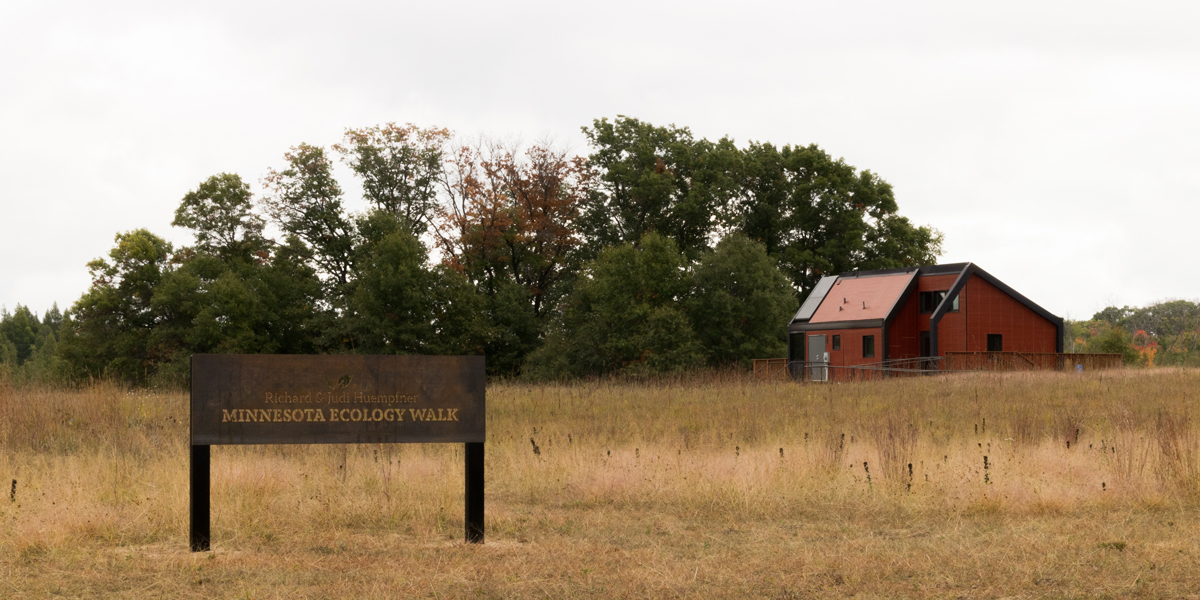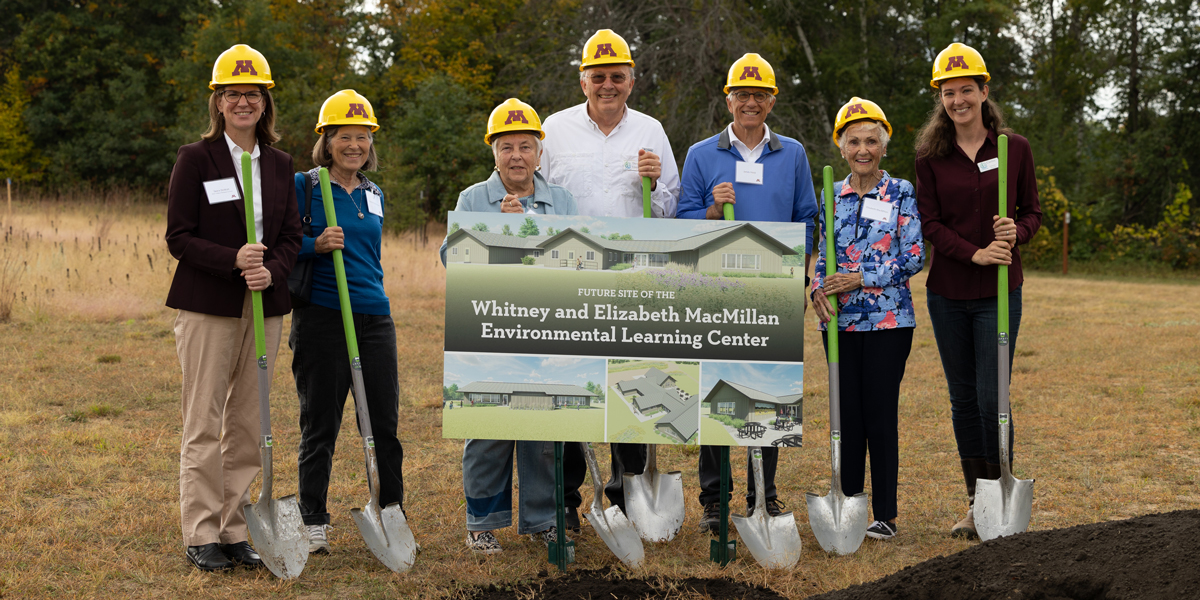
In late September, Cedar Creek Ecosystem Science Reserve welcomed supporters and guests to celebrate the dedication of the Richard and Judi Huempfner Minnesota Ecology Walk and a construction kickoff for the Whitney and Elizabeth MacMillan Environmental Learning Center.
The Minnesota Ecology Walk, a .25 mile interpretive trail located behind Lindeman Research and Discovery Center, offers visitors an accessible way to learn about the state’s major ecosystems including prairie, deciduous and coniferous forests, and oak savanna. The walk was named for longtime Cedar Creek supporters Richard and Judi Huempfner. Read their story.
The Minnesota Ecology Walk is open to drop-in visitors during daylight hours year-round. There is an additional hiking option at Fish Lake for those looking to extend their visit.

The Whitney and Elizabeth MacMillan Environmental Learning Center will expand the capacity of the Lindeman Center with the addition of two classrooms. This will allow Cedar Creek to reach thousands more K-12 students each year. Whitney and Elizabeth MacMillan, also longtime benefactors of the station, provided $ for the project along with funding for K-12 programs.
The MacMillans previously provided support for the construction of the Cedar Bog Lake trail as well as scholarship and bus subsidy that has increased access to Cedar Creek for students from urban schools in the Twin Cities. Construction on the 3,200 square-foot addition begins this spring with a planned opening in fall 2024.
“The Richard and Judi Huempfner Minnesota Ecology Walk is already opening up opportunities for our community to grow, learn and experience the world around them; this will be increasingly impactful with the addition of the new Elizabeth and Whitney MacMillan Environmental Learning Center and the expansion of our public-facing programs,” says Cedar Creek’s Associate Director Caitlin Potter. “The trail and new learning spaces will be a valuable way for field trip groups and members of the public to experience Minnesota's biodiversity, Native perspectives on the landscape, and Cedar Creek's science.”
—Stephanie Xenos